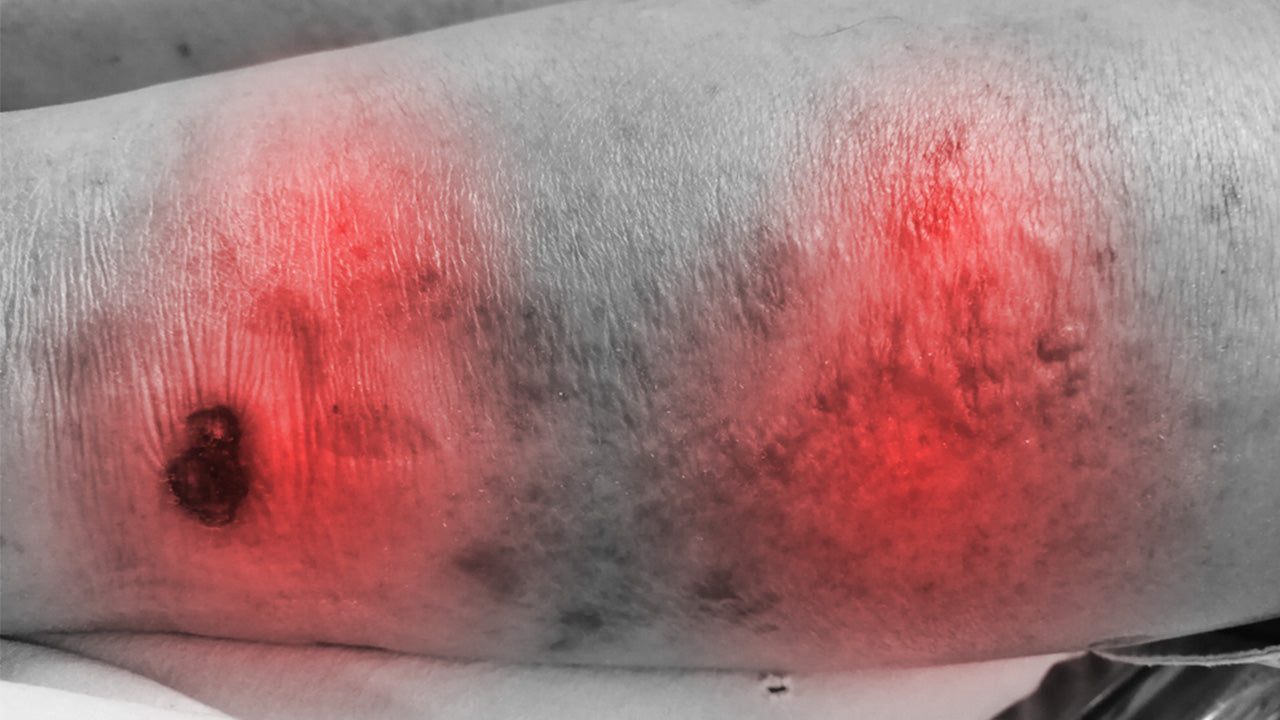Vibrio Vulnificus: The Flesh-Eating Bacteria
 By: by Amino Science
By: by Amino Science

Affecting humans and primates, Vibrio vulnificus is a type of gram-negative bacterium found in warm, shallow coastal water. First discovered in 1979, this Vibrio species is common in the Gulf of Mexico as well as parts of the East and West Coasts of the United States, including the Gulf Coast region comprising Alabama, Florida, Louisiana, Texas, and Mississippi.
When infected with V. vulnificus, patients can suffer an array of symptoms ranging from serious gastroenteritis (from consuming affected seafood) to soft tissue infections and necrotizing fasciitis, also known as flesh-eating bacteria.
It’s important to note that a Vibrio infection is a serious condition. According to the Centers for Disease Control and Prevention (CDC), one in seven people with V. vulnificus dies, and others require intensive care or even limb amputation. Vibrio vulnificus strikes approximately 205 Americans each year and is the main cause of seafood-related deaths. If you think you may be suffering from a vulnificus infection, don’t hesitate to seek immediate medical attention.
How Do You Get Vibrio Vulnificus?
People most commonly contract V. vulnificus as a result of consuming raw or undercooked shellfish, such as raw oysters. However, skin infections also occur if an individual with an open wound is exposed to salt water.
According to the CDC, living in hurricane-prone regions is a high-risk factor for a vulnificus infection due to exposure to coastal water, particularly between the months of May and October, when water temperatures are warmer (9° to 31 °C).
While anyone can contract a Vibrio infection, the condition is more common in those with compromised immune systems or liver diseases. Additionally, those who have undergone recent stomach surgery may be at an increased risk.
To protect yourself from V. vulnificus, try to avoid raw oyster consumption or eating any shellfish that has not been thoroughly cooked. The authors of a review article in Frontiers in Microbiology reference studies that show this Vibrio species was found in "3.5–8% of seafood samples in Europe, 2.4% of shrimp from Southeast Asia, 75% of freshly harvested oysters in India, and 100% of oysters harvested from the Gulf of Mexico during warm months."
It’s also wise to avoid swimming in salt water if you’re suffering from an open cut or sore. If an open wound does come into contact with brackish water (or raw seafood), wash it thoroughly with soap and water. If the wound becomes infected, it's important to tell your health care provider about any exposure to salt water, raw seafood, or seafood juices.
What Are the Early Signs of Vibrio Infection?
Symptoms of a Vibrio infection usually occur within 24 hours of coming into contact with the bacteria. According to the CDC, early signs include:
- Watery or bloody diarrhea
- Nausea and vomiting
- Stomach cramping and abdominal pain
- Fever
- Headache
If you contracted a V. vulnificus infection through an open wound, you may also develop a skin infection or bloodstream infection, known as primary septicemia. Symptoms include fever, chills, low blood pressure, skin lesions, and blistering. Open-wound exposure can also lead to swelling, redness, and pain near the infection site.
Bloodstream infections are more common in patients who are immunocompromised, such as those with chronic liver disease. In severe cases such as these, septic shock kicks in, increasing the likelihood of death.
If you’re suffering from a condition that affects your immune system, it’s a good idea to avoid brackish or salt water. If you think a wound may have come into contact with salt water or raw seafood, wash the area carefully using soap and water. Don’t hesitate to contact your doctor if you develop one or more of the above symptoms following exposure.
Vibrio Treatment Options
Patients with vulnificus infections will likely need antibiotics to fight off the Vibrio species. It is imperative to seek prompt treatment; the longer treatment is delayed, the higher the mortality rate is likely to be.
The most effective treatments for this bacterial infection include doxycycline, tetracycline, third-generation cephalosporins, and imipenem. Unfortunately, this aggressive bacterium has become resistant to certain antibiotic profiles due to the widespread misuse of antibiotics. Antibiotic resistance to V. vulnificus has reached alarming levels in many countries, which renders current treatment methods for bacterial infections in jeopardy, according to the World Health Organization (WHO).
Patients may require aggressive supportive care to recover. In some cases, patients with wound infection require debridement to remove necrotic tissue and treatment for sepsis and potential organ failure. Other common complications that require treatment include hypotension, lactic acidosis, and coagulation disorders. In the most severe cases, patients may need surgery to amputate the affected limb and stop the Vibrio vulnificus infection from spreading.
Scientists are attempting to create an effective Vibrio vulnificus vaccine. In the meantime, developing efficient medical treatments and gaining a better understanding of the antibacterial resistance profile of V. vulnificus in certain countries is health priority number one.
In the meantime, boosting your immune system with nutrients like vitamin C, zinc, and essential amino acids can go far in protecting your health.


Up to 25% off Amino
Shop NowTAGS: conditions
Join the Community
Comments (0)
Most Craveable Recipes




 833-264-6620
833-264-6620



















